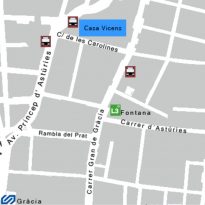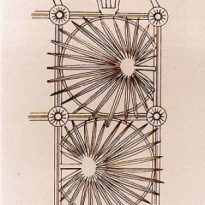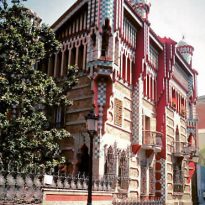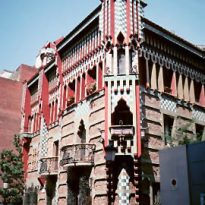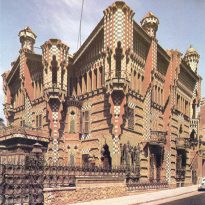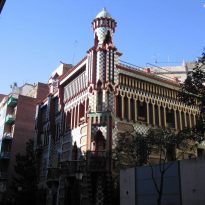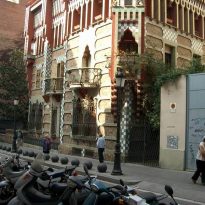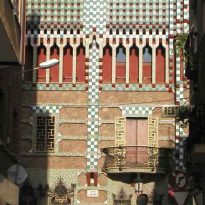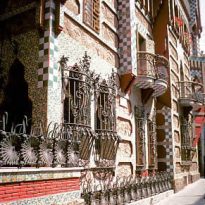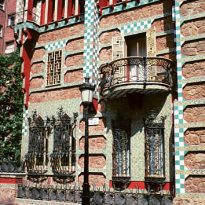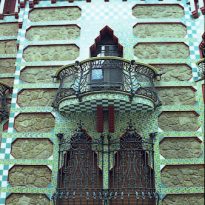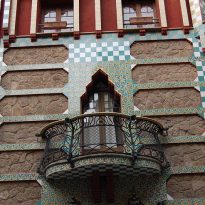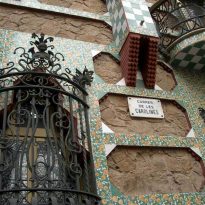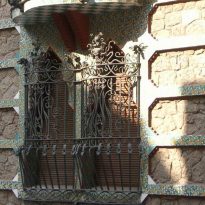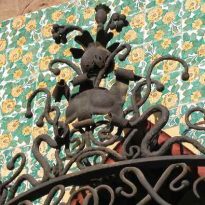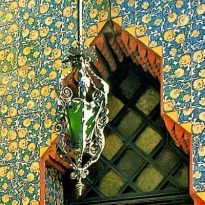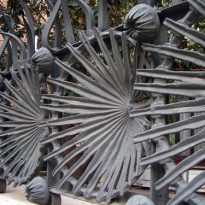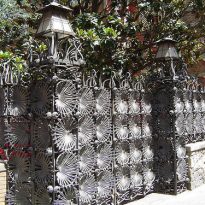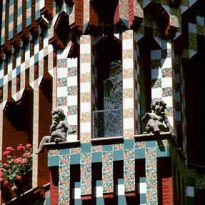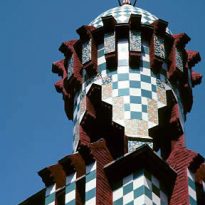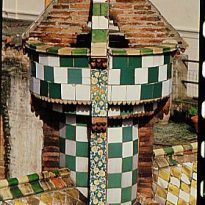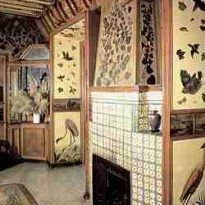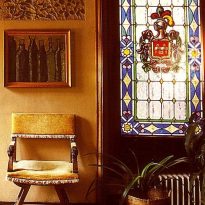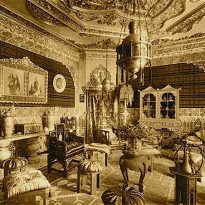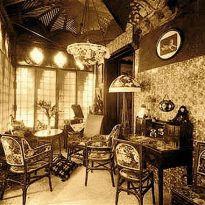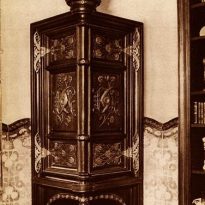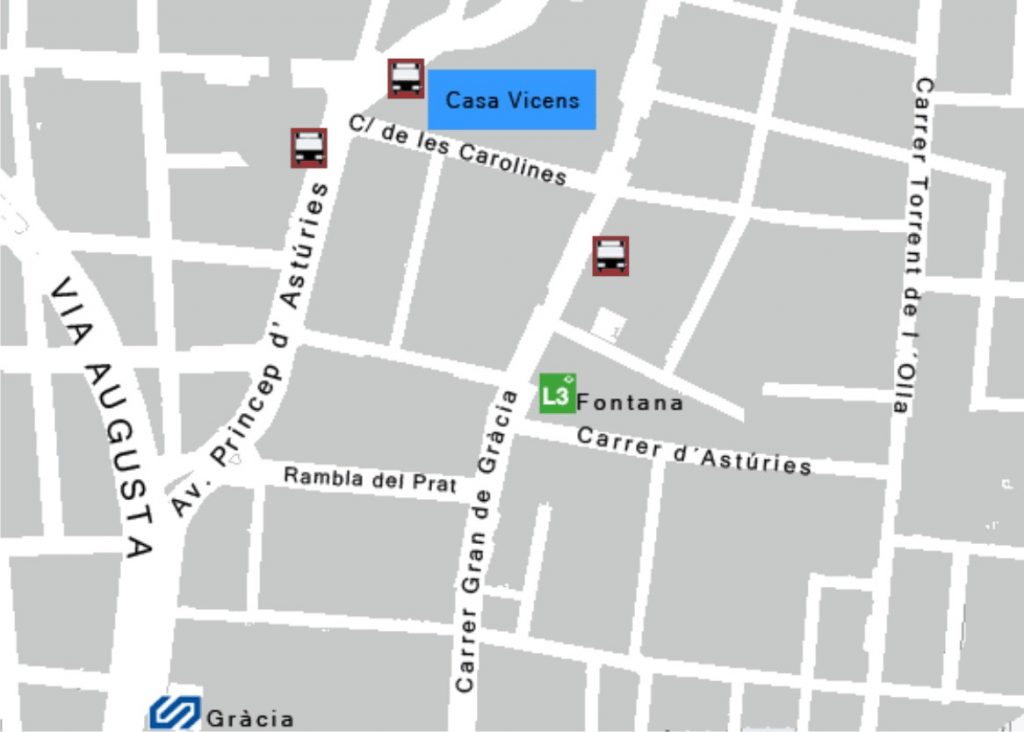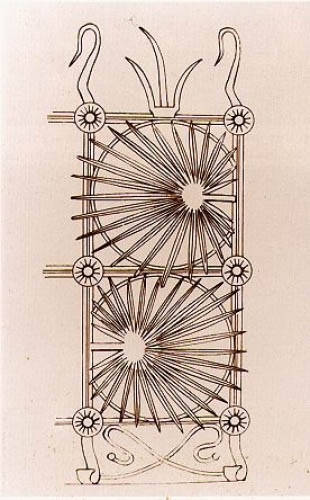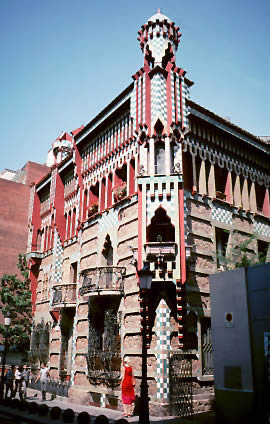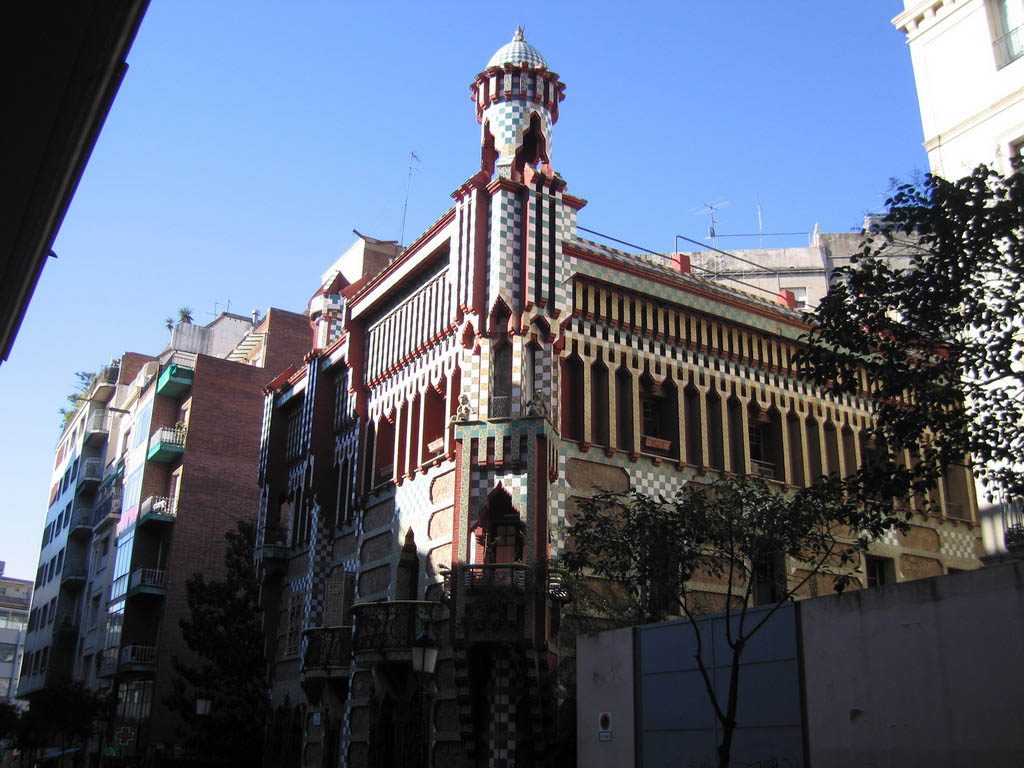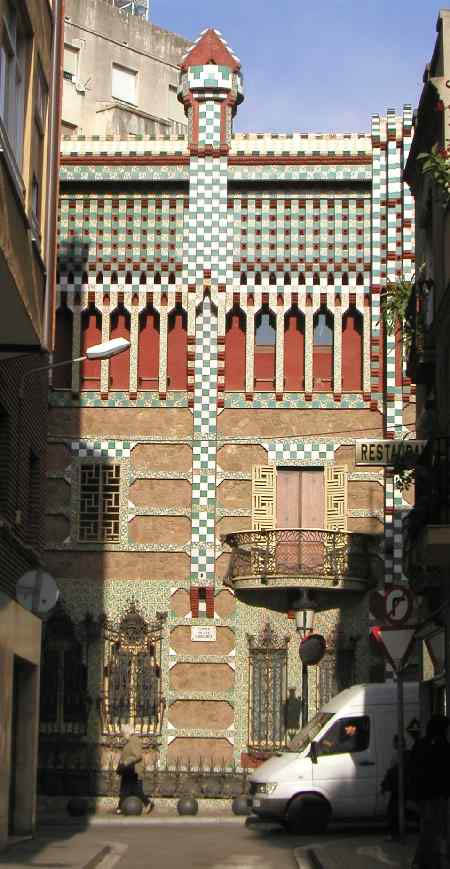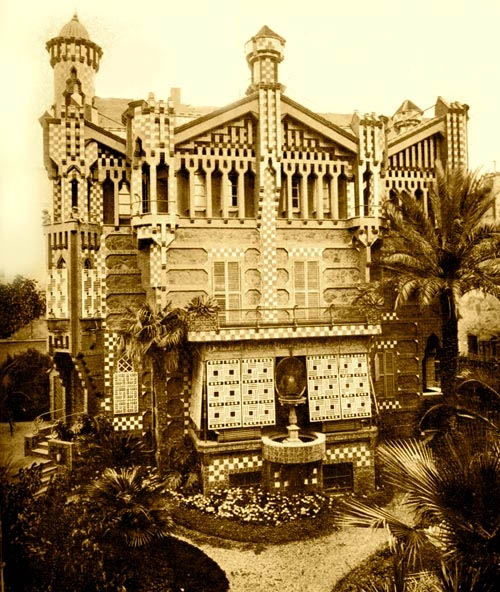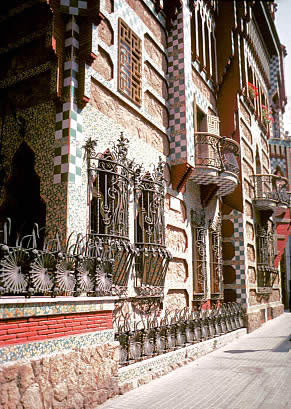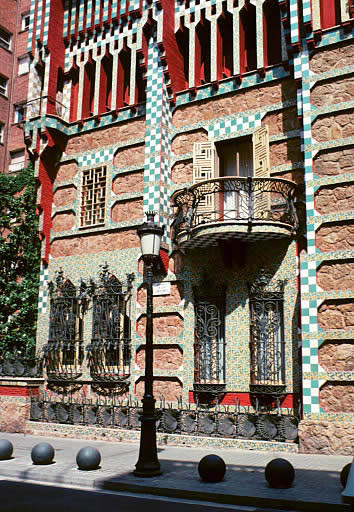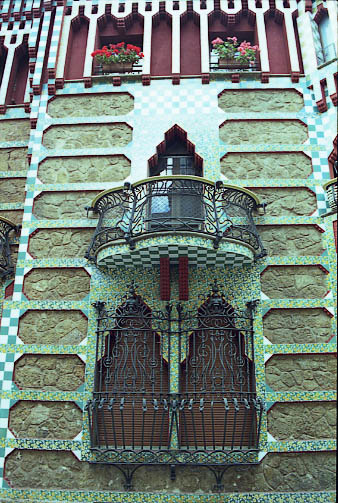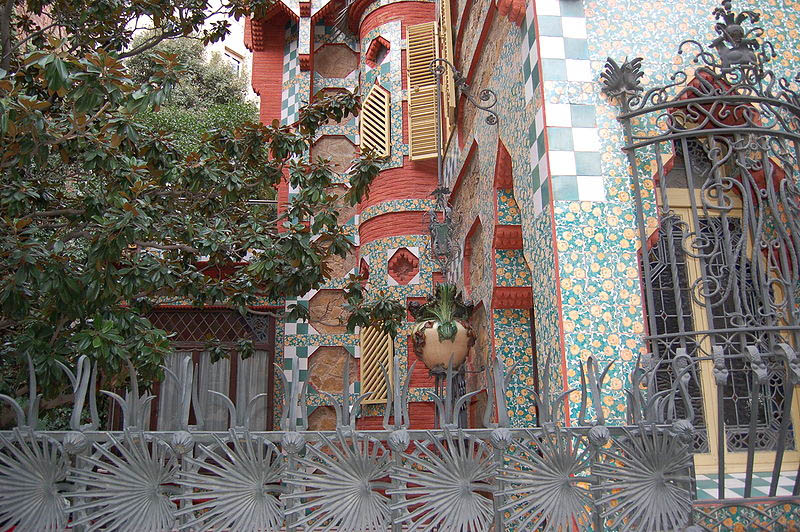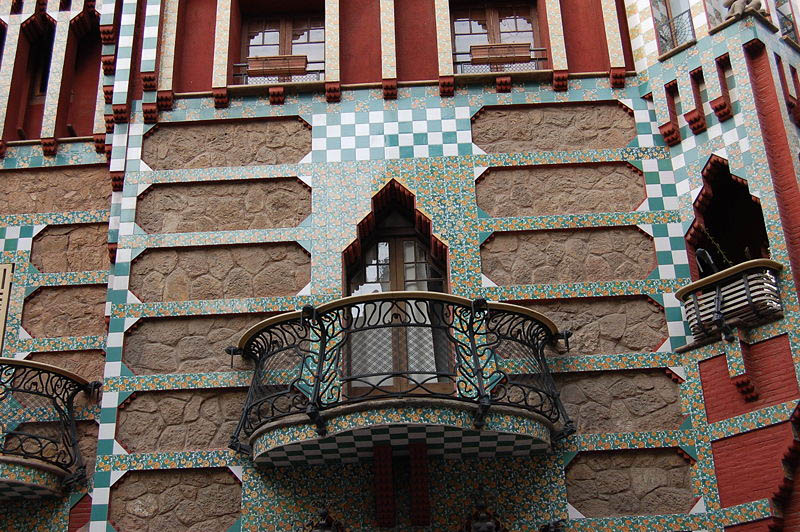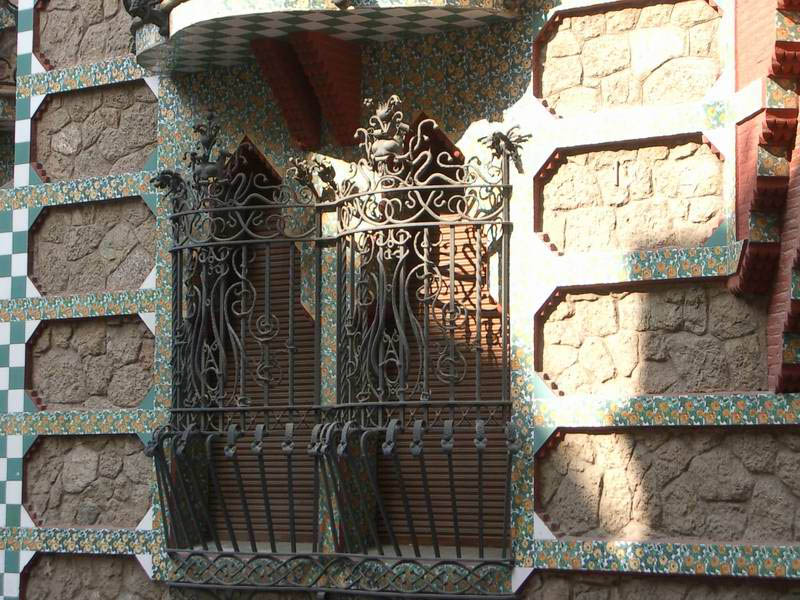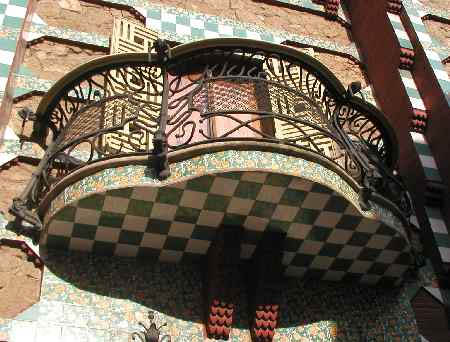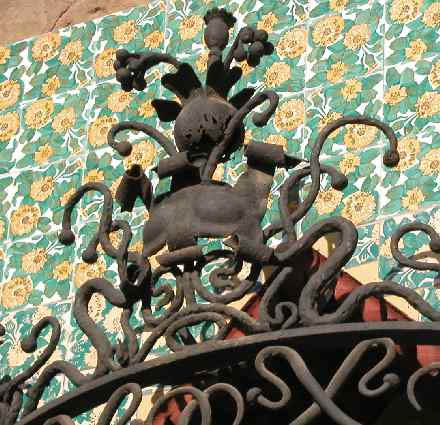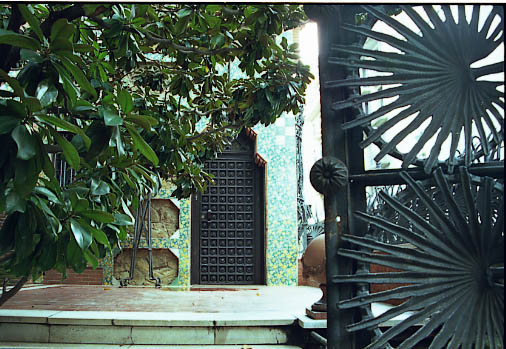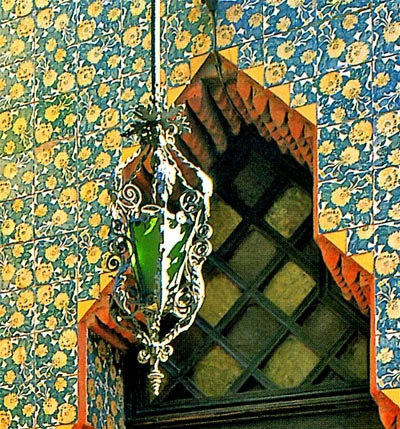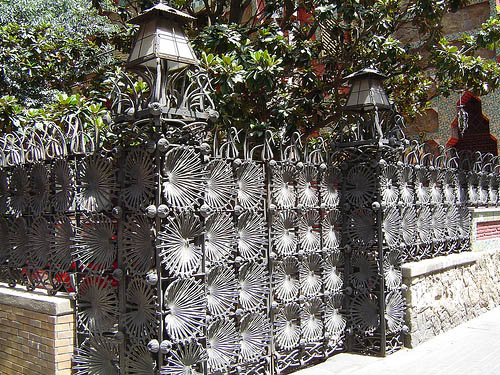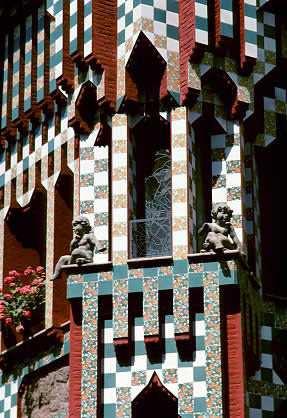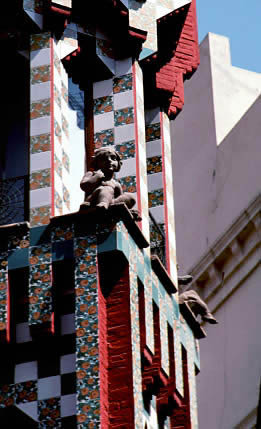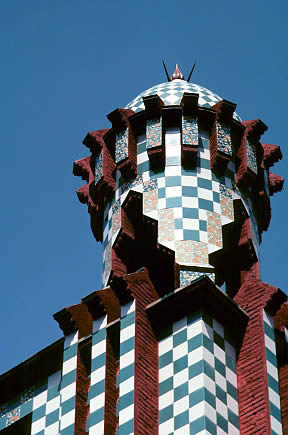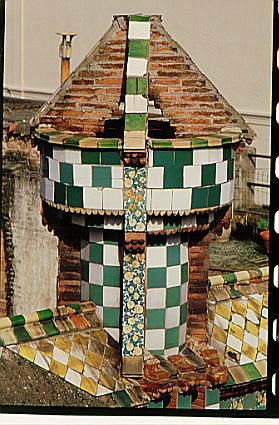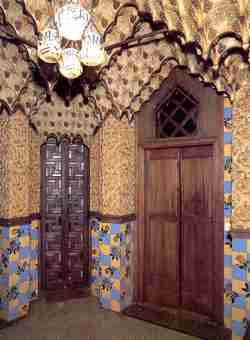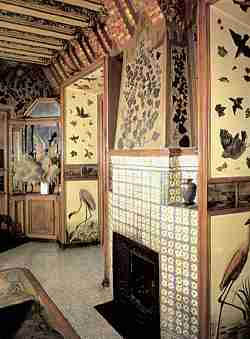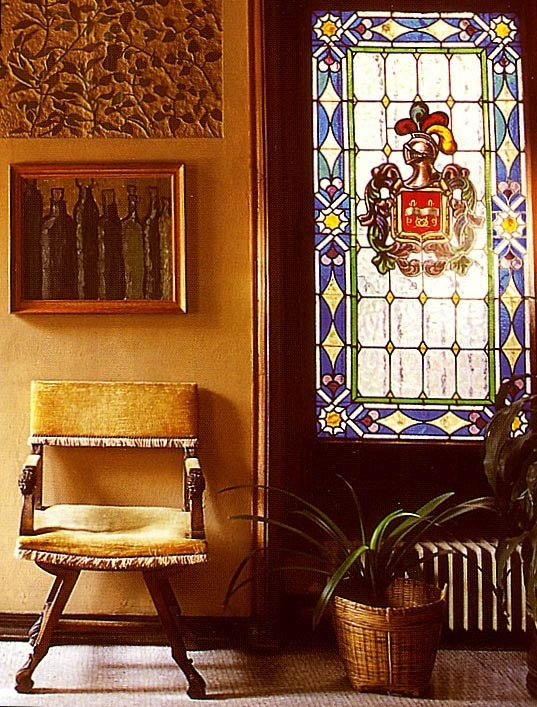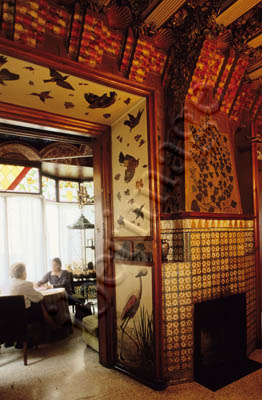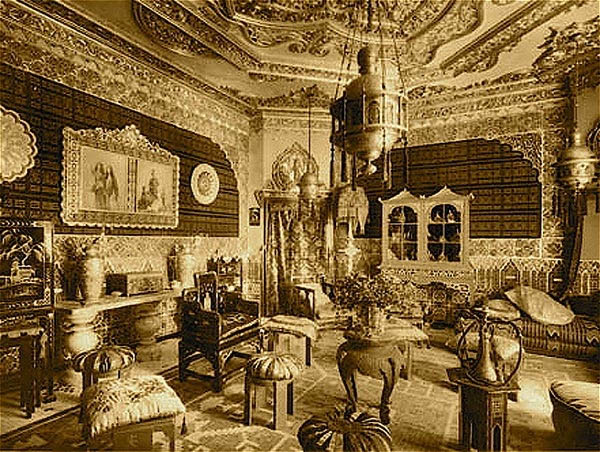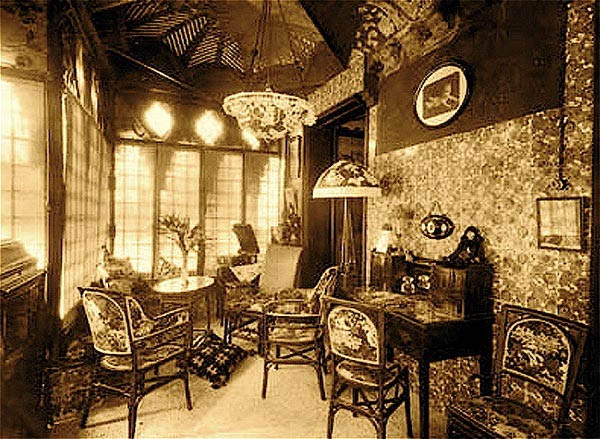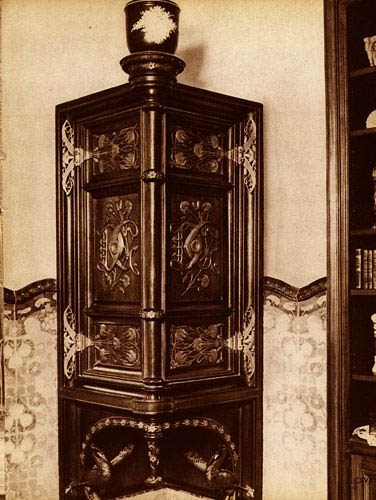Vicens House
Introduction
Casa Vicens is a modernist building and the first important project of Antoni Gaudí following his architecture degree in 1878.
Gaudí found himself at that time in the first period of his career, which was characterised by the use of an architectural language of great constructive simplicity, in which the straight line took precedent over the curved. Stylistically, it coincided with a period of oriental influence, when the structural forms and decoration corresponded to his taste for oriental art, principally Mudejar, Persian and Byzantine, as seen in other of his works such as the Güell Pavillions, Güell Bodegas (wineries) and El Capricho of Comillas.
Gaudí was commissioned by Manuel Vicens I Montaner for a second summer residence for his family, on the plot of land he inherited from his mother in 1877. Vicens was a trade and stock exchange broker, though in some sources he is cited, erroneously, as a manufacturer of bricks and tiles. Due to economic difficulties encountered by the proprietor, the completion of the house took longer than expected.
In 1899, Vicens’ widow, Dolors Giralt, sold the house to Antoni Jover I Puig. Most recently, it was owned by Fabiola Jover de Herrero and sold to MoraBank in 2014. The Jover family tried to maintain it in good condition, respecting Gaudí’s design and even consulting him on some details. In order to do so, they decided to undertake the necessary renovations to rectify the deterioration the building had suffered over time, in particular the detachment of pieces of the façade. Tau Ceramics made the tiles traditionally after dedicating themselves to a detailed study of the pigments, materials and pattern. They employed the same techniques used over 100 years previously, achieving an impressive restoration, whereby the tiles made during the 20th Century can be confused with those made in the 19th.
In 1927, Barcelona City Council granted it the Best Building Award. In 1969, it was declared a monument of historical-artistic importance, by virtue of the Decree of July 24, 1969 (Official State Gazette of August 20, 1969). In July 2005, it was declared a World Heritage Site by UNESCO.
Location
Casa Vicens is situated at 24 Calle Carolines in the Gracia area of Barcelona, Spain. At the time of its building, Gracia was still an urban centre independent of Barcelona and had its own City Council, with the status of a town, although in reality it was a zone of the city.
The plot is between the convent of the Daughters of the Charity of San Vicente de Paul, and a cul-de-sac perpendicular to Calle Carolines. Though it is now surrounded by taller buildings, it maintains the unique charm of being Gaudí’s first work.
Concept
One of the essential characteristics is the abundant use of ceramics on the façades, which give the construction a strikingly colourful appearance. This work could be defined as a beautiful “collage” of styles and a breeding ground for new ideas. One can appreciate the Muslim and Arabic influences, in a curious fusion with autochthonous elements. The profusion of wood panelling, tiles and painting in the decoration of the interior creates a somewhat disjointed and barroque ensemble.
Gaudí did not utilise the curved lines of his own architectural style but instead maintained the traditional application of straight lines: rules and squares. This is evident throughout the building, which has different spaces separated by angles.
The exterior structure is hugely original. The building has three façades with a series of bodies which appear like buttresses, and others as galleries or towers attached to the corners. Seen from the street, the building seems to grow outwards as it ascends.
Spaces
The house is structured over four levels or floors, comprised of a basement for use as a cellar, two floors to be used as living space and an attic for the servants’ use.
The work is supported by the dividing wall of a neighbouring convent. In this way, it boasts three façades and a spacious, ample garden. On the other side of the garden, Gaudí designed a monumental brickwork fountain, formed by a parabolic arch, above which there was a walkway between the columns. The water was stored in two tanks placed inside each of the pillars at the extremes of the fountain. In 1946, it was demolished as that part of the land was sold.
The garden was closed by a covered wall, and a cast iron gate in the form of palm leaves at the entrance, which was designed by Llorenç Matamala.
The house is crowned by chimneys and towers in the form of temples.
In a refurbishment carried out in 1925 by the architect, Joan Baptista Serra Martínez, a temple was constructed in the garden, with a fountain named after Santa Rita, in the corner with the Avenida Príncipe de Asturias. It was later demolished in 1962.
Nowadays, the site of the old gardens is occupied by apartment buildings. Various sections of the palm-leaf gate can be found in the entranceway to Parque Güell and in the Casa-Museo Gaudí.
Gaudí also designed some of the furniture of the house.
Materials and Decoration
Among the materials of the façades, those that stand out are the red bricks, the stone and the painted tiles. The walls are masonry, alternated with rows of tiles, which display yellow flowers local to the area, known as Indian marigolds or Tagetes Erecta.
On the main façade, there was a gallery- later remodelled- which was closed by wooden lattice panels. In the centre was an old Renaissance basin with a metal grille representing a spider’s web, on which the water bounced, and on which the sunlight made the colours of the rainbow.
On the exterior gates, the heavy palm leaves were distributed in a grid of “T” shapes in cast iron, whose intersections were adorned with a reproduction (in the same material) of the buds of the Tagetes Erecta plant, also seen in the ceramics which adorned the outside of the building.
Once inside, the beams of the ceiling are made of polychromatic wood, decorated with floral themes made of “papier maché”. The walls have sgrafittos of plant motifs, as well as paintings by Josep Torrescanasa. Lastly, the floor is a Roman mosaic of “opus tesselatum”.
One of the most original rooms is the smoking room, where the highlight is the ceiling painted as a clear sky and decorated with Arabic muqarnas, which bring to mind the “Palacio de Generalife” (or “Architect’s Garden”) in Granada.
On the frieze of the gallery are various phrases from Catalan folk tales: “sol, solet, vine’m a veure que tinc fred” (sun, little sun, come to see me, I am cold); “Oh, l’ombra de l’estiu” (oh, shade of summer); “de la llar lo foc, visca foc de l’amor” (from home the fire, live the fire of love).
